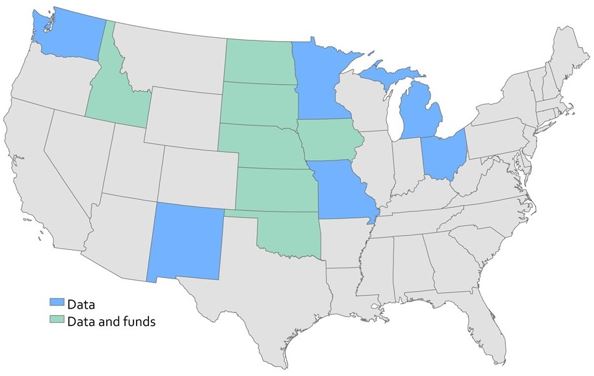Forecasting pheasant numbers is always a challenge. But biologists are always looking for ways to do it better.
By Scott Taylor
Part 2 of a Series
“So how are pheasant numbers looking this year?”
As a (now former) upland game biologist for a state wildlife agency, that seemingly innocuous question was always fraught with peril.
The data we collected each summer to measure statewide pheasant abundance were not perfect, so a science-based answer was never certain. Deal with that uncertainty by painting too rosy a picture and you were labeled a swindler by some, with you and your agency only interested in fooling hunters into buying licenses. Too much pessimism upset the business and tourism communities, who rightly argued they could provide memorable hunting experiences even when bird numbers were down.
Though the work was always a team effort within the agency, as the lead biologist, helping write the annual pheasant hunting forecast was usually an exercise in tightrope-walking for me. When the data suggested a drop in bird numbers, the tightrope felt more like a plank.
One of the best parts about being the National Pheasant Plan Coordinator (aside from no longer having to write forecasts) is helping foster conversations about common issues among the pheasant states. Get a bunch of upland game biologists in a room and it doesn’t take long for the problem of population forecasting to come up, which is what happened a few years ago at a meeting of the National Wild Pheasant Technical Committee, an organization of agency pheasant specialists from across the country.
Kansas was contemplating a new research project aimed at improving the reliability of their summer brood surveys (i.e., annual counts of pheasants seen along standard roadside routes), which resonated with several other states. Would it be possible to expand that project across state lines, yielding larger sample sizes and more robust results?
Doing so would require states to commit funding for a graduate student and staff time to collect data, and to send those resources to a university outside their own borders. This is never an easy sell to agency administrators, which helps explain why it had been about three decades since the last multi-state pheasant research project was attempted.
After choosing Iowa State University professor Dr. Adam Janke to lead the project, 13 states agreed to participate in the three-year study (see map below). Seven agreed to provide funding and collect standardized survey data, and six pledged data only. A myriad of state purchasing paperwork was miraculously negotiated, and field work started in the summer of 2019.
States contributing to the multi-state brood survey research project:

Regarding the study, the main problem in counting wildlife is that most animals actively avoid humans and other potential predators, so wildlife surveyors typically see only a fraction of the individuals actually present. Scientists have come up with ways of estimating the proportion of animals detected (and by extension, not detected, which is the real trick) by repeatedly surveying the same areas and seeing how the results vary from run to run. Analyses can also reveal how covariates like weather or time of day affect these “detection probabilities.” Since pheasant survey routes in most states are only run once per summer, applying these correction factors could make results more reliable, provided those factors behave in stable and predictable ways.
We still have one more year of data collection to go, but Dr. Janke and Zachary Deines, his graduate student, have been sorting through the numbers so far. Over the past two years pheasant and quail observations were recorded on 667 runs of about 90 routes under standard protocols. Preliminary analyses on a subset of the data suggest detection probabilities were in the 20 to 40 percent range, and dew — thought to be the most important covariate in brood counts — did not appear to have a consistent, predictable effect across states. (Perhaps not coincidentally, dew also proved hard to objectively measure.) We’ll see if those patterns hold when the 2021 data are added to the mix.
Research never comes with a guaranteed result, and even well-designed studies can produce as many questions as answers. But we should come out of this project with a much better idea of the strengths and limitations of roadside surveys, even if that knowledge doesn’t end up dulling the pain of forecasting much. Most importantly, it shows that multi-state research is a viable option: Hopefully we can start making a habit of it. Many hands really do make light work.
Next time we’ll discuss the tool pheasant managers want most (other than a 50-million-acre Conservation Reserve Program).
Prior to becoming the National Wild Pheasant Conservation Plan Coordinator, Scott Taylor worked for the Nebraska Game and Parks Commission as an upland game biologist, wildlife research section leader and Wildlife Division chief. He earned a B.S. in Wildlife Biology from Kansas State University, a M.S. in Range and Wildlife Management from Texas A&M University-Kingsville, and a Ph.D. in Wildlife Ecology from the University of Wisconsin-Madison. He lives in Manhattan, Kansas and is a PF Life Member.